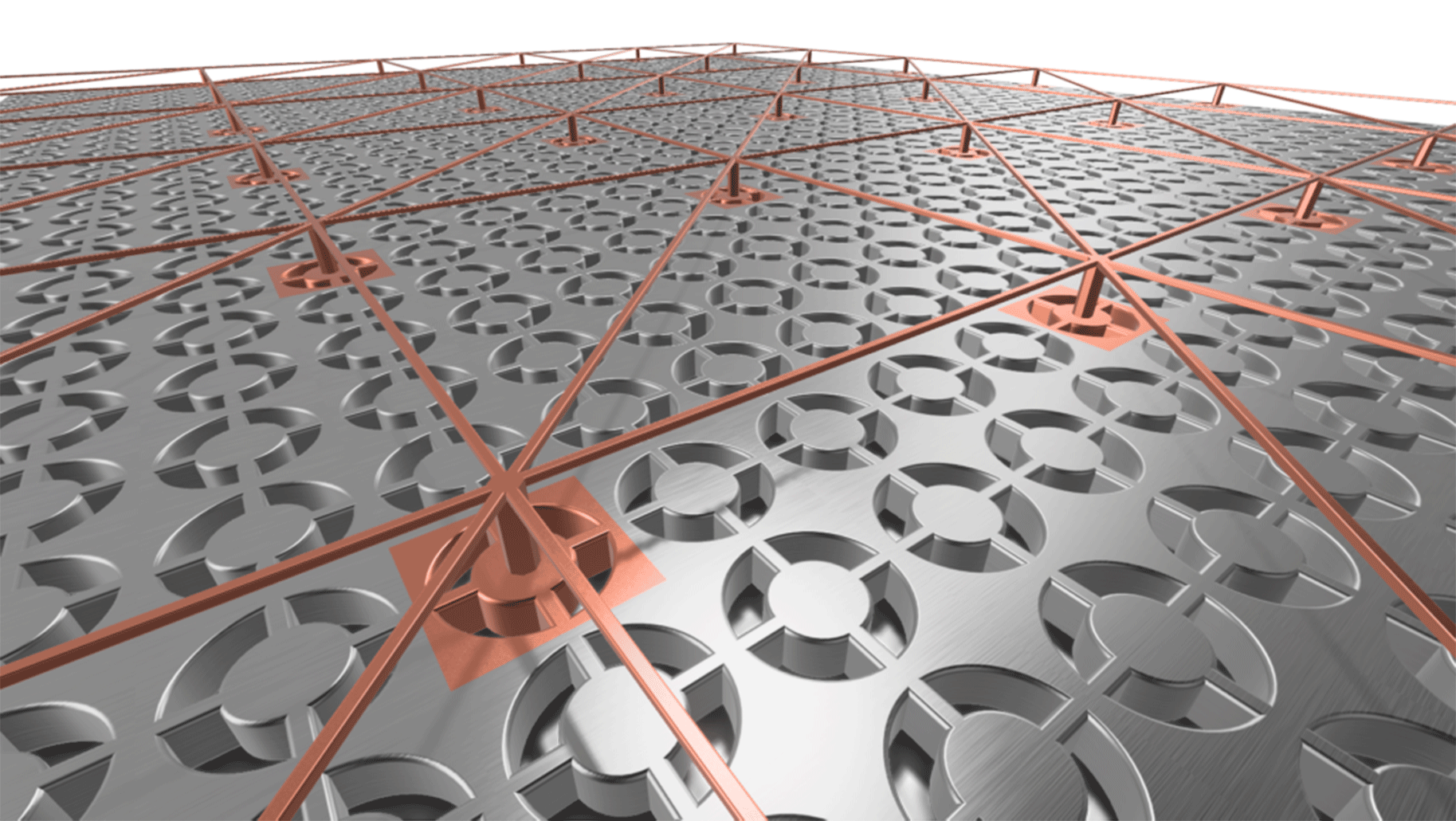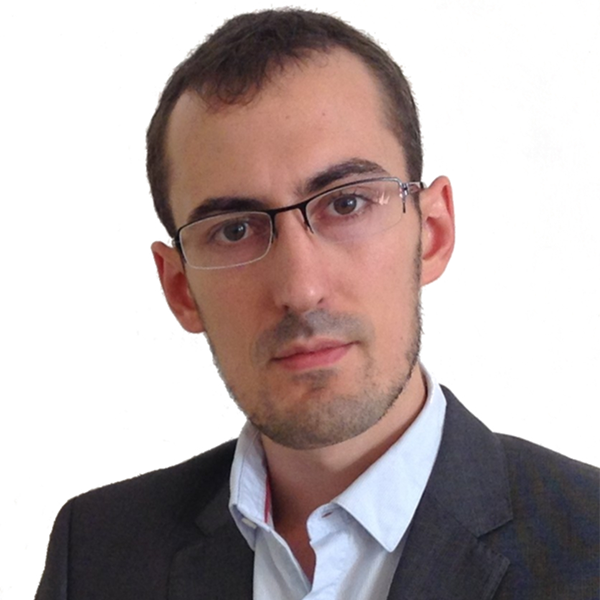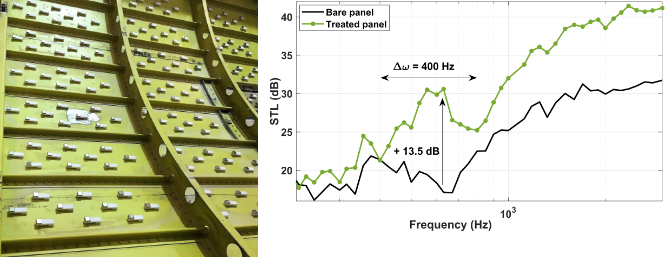
Have you ever sat in a plane and wondered at the turbine hovering over the clouds just a few metres from your window? It’s hard to imagine that a concentration of technology can protect you from a deafening 130 decibels, -40°C outside and vibrations that would make your teeth chatter. The relative comfort you enjoy inside the cabin is the result of a decades-long battle against noise and vibration.
When objects vibrate, they emit sound, known as acoustic radiation. Sound can, in turn, influence objects and create vibrations. Both are transmitted in their respective environments, in what is known as airborne or structure-borne sound. In physics jargon, this is known as vibro-acoustics.
In practice, reducing these vibrations often requires creating oversized mechanical parts, particularly in the transport sector. On aircraft, for example, fuselages are heavily lined with absorbent foam. This “sound package”, which houses the various soundproofing components, must be compact, light, inexpensive and as effective as possible.
Preventing vibratory energy from propagating
This is achieved by using “metamaterials”; new concepts in materials with remarkable properties that do not exist naturally. To design and deploy them, engineers use a well-known concept in physics: band gaps. When a material has a repetitive geometry - known as a periodic structure, or phononic crystals - an interference phenomenon confers on them the ability to prevent the transmission of sound waves and thus impede vibratory energy from propagating. Based on this principle, physicists and acousticians have learned to design periodic materials that block or manipulate sound waves and absorb unwanted vibrations.
For this purpose, numerical theories and methods are invaluable, as they make it possible to predict how the waves will propagate in the periodic structure by modelling just one periodic cell that is representative of the medium.
This is more or less the current state of the art. But using interference to manipulate waves has one major limitation: it cannot block low frequencies. Low-frequency vibrations are often the most damaging and difficult to eliminate. As a result, the performance of these periodic materials remains stagnant.
Private jet fuselage equipped with a solution using adaptable multi-frequency micro-resonators (Droz et al. JASA 2019). These so-called “multiresonant” solutions use local resonances and can be placed under insulating foam to cover wide frequency bands while adapting to the geometry of the structure. Despite their effectiveness in the acoustic field, these concepts are not capable of blocking the propagation of very low frequencies (in this case, below 300 Hz).
In their quest to reduce decibels, scientists need to think outside the box and adopt radically new approaches. This is what Archi-Noise is all about. The project is funded by the ANR as part of the Young Researchers scheme. It is led by Christophe Droz, member of I4S, , a team jointly run by Université Gustave Eiffel and Inria. This research team develops innovative methods for monitoring structures, particularly in civil engineering: bridges, rail, wind turbines, etc.
The five properties of metamaterials

Verbatim
Ideally, metamaterials should have five properties: low weight, low volume, low cost, low manufacturing uncertainties and the ability to absorb low frequencies. In analysing the literature, we came to the conclusion that these five criteria could not be met if they were confined to the periodic paradigm alone.
Research scientist - I4S team
"In our view, this solution is doomed to failure. We therefore propose exploring a slightly different route. We will be relying on so-called “distant non-locality” phenomena that are generally encountered at other scales of physics, for example in quantum or magnetic systems. We have observed that by producing distant interactions in a structure, remarkable wave phenomena could emerge that would make it possible to overcome this limit in blocking low-frequency vibrations”. We could therefore envisage establishing a transfer of mechanical energy between two cells located at distant points on the same fuselage to reduce acoustic pollution.
Until now, such phenomena have only been observed and used on smaller scales, on electromagnetic waves in photonics or electronics, for example. The scientific challenge will be to reproduce them on the largest scales encountered in the field of vibro-acoustics: macroscopic scales. The research is still at the hypothetical stage. Much remains to be proven. “How does our metamaterial respond to long-distance dynamic interactions? We don’t know. No one has really explored this avenue.”
For this phenomenological exploration, the scientists will be relying on intensive simulation. “It enables us to test hundreds, if not thousands, of concepts. Of course, we know that there will be disparities between digital technology and experimentation. We are not necessarily looking for precise quantitative information. But in qualitative terms, simulation gives us information about the physical phenomena observed. And in the end, it provides more information than experimentation. Using digital technology, we can interpret the propagation of waves and the underlying physical phenomena, which is unfortunately not the case with experiments.”
Towards real uses
Next comes the design phase for the materials, also known as “lattices”. “It can be tricky to design such architecture from theory. We want to move from these mathematical models to real-life applications.” To achieve this, the Archi-Noise project plans to create a new platform that will be used for physical understanding and will enable the deployment of new tools for “bridging the gap between fairly abstract interaction metrics and real geometries that can be fabricated by engineers.”
Which means that the scientists still have a lot of work to do. “There are many forms of mechanical interaction. We want to explore different families to see what acoustic signatures they produce.” This work must be incremental. “We will start with simple theories in one dimension (1D), then 2D and 3D. Then we will move on to more complex but promising theories.”
To add an extra difficulty: “We are going to have to find the right metrics to assess the structures we invent. For periodic structures, we know how to identify the dispersion properties of waves. It is immediately clear whether the structure has the required properties. For the structures we are going to create, this is a little more complicated, as these properties will depend on the scale at which we observe them. We would like to identify local metrics that allow us to estimate a global performance indicator.”
The project will run for four years. It will also involve a doctoral student and a post-doctoral fellow.
We don’t know how far we will be able to go. But the important thing is to develop original, usable vibro-acoustic phenomena based on these new concepts. If it works, we will have a body of methods, results and metrics to take things further. We can then try to scale up, and move on to experimentation with industrial partners.

Know more about Archi-Noise project with Christophe Droz (french)
